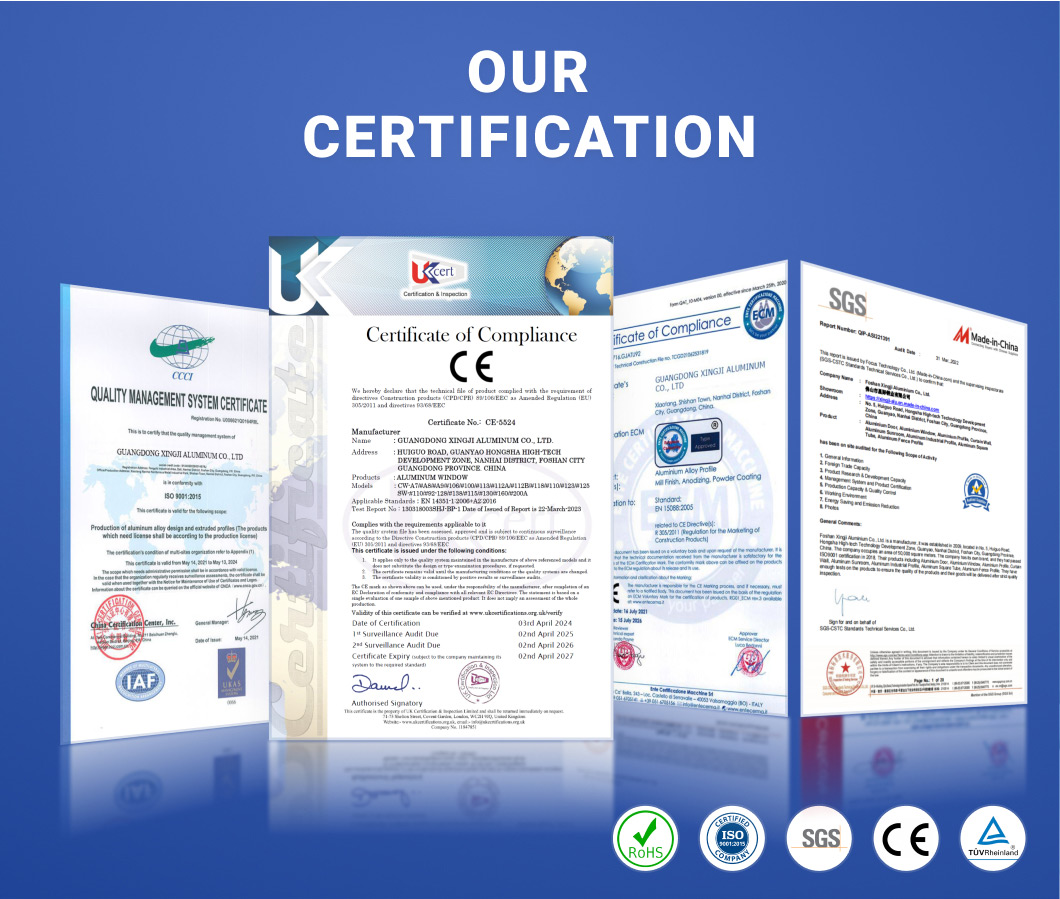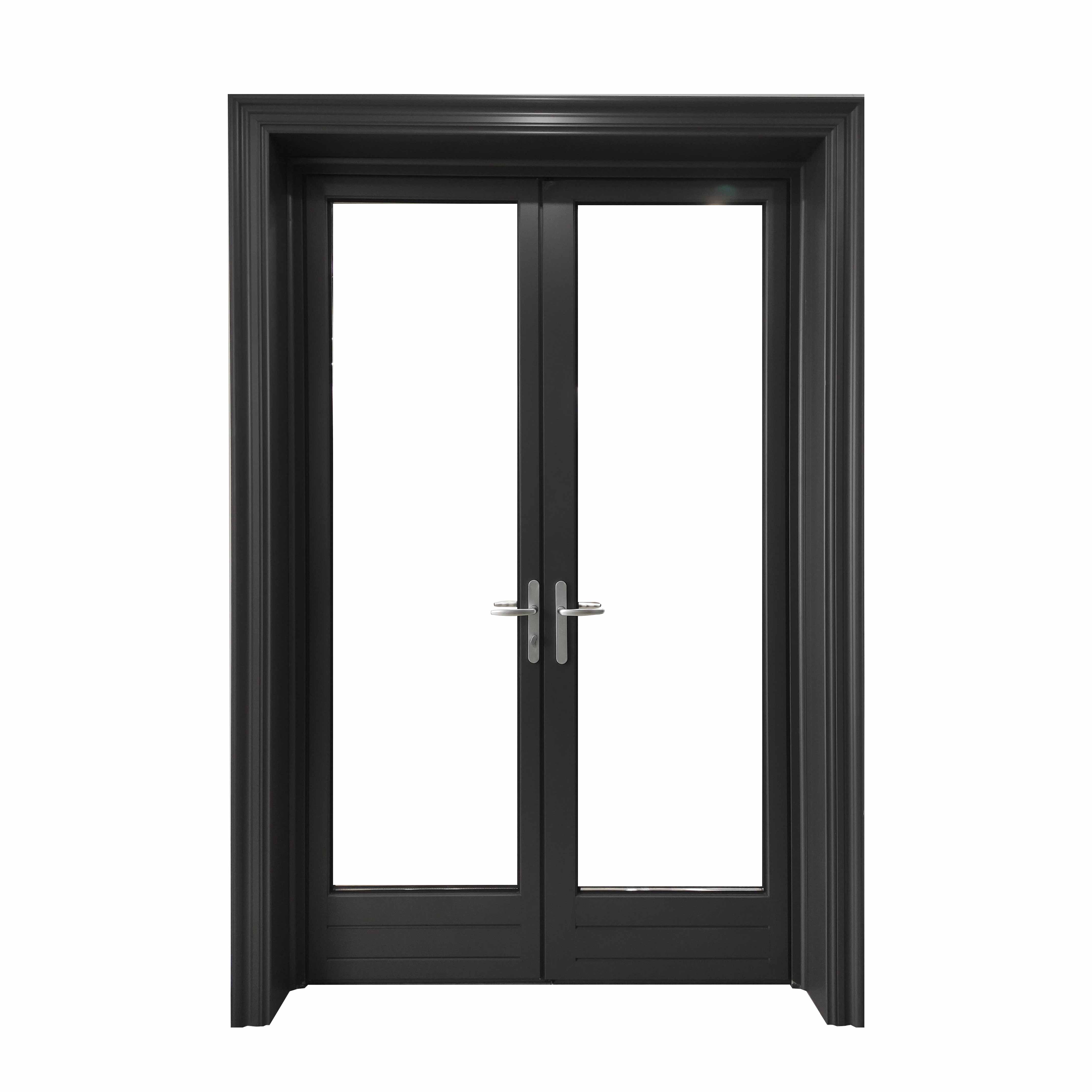Aluminum doors are a popular choice in both residential and commercial settings due to their durability, modern design, and low maintenance. However, with so many materials used in door fabrication, it can sometimes be challenging to identify whether a door is truly made of aluminum. This guide will help you understand the key characteristics of aluminum doors and how to distinguish them from other materials. We'll also touch on different types of aluminum doors, such as powder coated aluminium doors and aluminium clad doors.
1. Physical Characteristics of Aluminum Doors
One of the simplest ways to determine if a door is made of aluminum is by evaluating its physical characteristics. Aluminum has unique properties that distinguish it from other materials like wood, PVC, and steel.
Weight and Strength: Aluminum is lighter than steel but still very strong. If the door feels lighter than expected but still sturdy, it could be aluminum. This is especially true for doors used in aluminium door fabrication, where strength and lightness are essential. Aluminum doors are easy to maneuver and install, especially in spaces where large doors or panels are used.
Corrosion Resistance: Another feature of aluminum is its resistance to rust and corrosion. Unlike steel, which can rust when exposed to moisture, aluminum forms a protective oxide layer that prevents corrosion. If you notice that the door has been exposed to weather for a long period without showing signs of rust, it is likely made of aluminum. This characteristic is especially important for external doors, such as powder coated aluminium doors and aluminium clad doors, as they are often exposed to the elements.
Surface Finish: Many aluminum doors are coated to enhance their appearance and durability. For example, powder coated aluminium doors have a distinctive finish that's smooth and durable. Powder coating not only gives the door a modern and attractive look but also adds an extra layer of protection against weathering. If the door has a uniform, matte or glossy finish with no signs of peeling or fading, it may be a powder-coated aluminum door.

2. Design and Functionality Features of Aluminum Doors
Beyond the physical characteristics, examining the door's design and functionality can offer more clues about whether it's made of aluminum. Aluminum is a versatile material that allows for various styles and types of doors, including internal and external options.
Slim Frame Design: One of the signature features of aluminum doors is their slim profiles. Aluminum is strong enough to allow for thin, sleek frames without sacrificing structural integrity. This is often seen in both aluminium doors internal and external models, such as sliding or bi-fold doors. If the door has a slim, minimalistic frame but feels sturdy, it's a good sign that it could be made of aluminum. Aluminum's ability to maintain strength with minimal material makes it ideal for modern design aesthetics.
Integration with Other Materials: Many high-end aluminum doors are combined with other materials for added benefits. For example, aluminium clad doors feature a layer of aluminum on the exterior, while the interior might be made of wood or another material. This combination allows for the durability of aluminum on the outside and the aesthetic warmth of wood on the inside. If you see a door that has an aluminum exterior but a different material inside, it's likely an aluminium clad door. These doors are commonly used in high-end residential applications where both design and durability are important.
Custom Designs: Aluminum is also used in the fabrication of custom doors, like aluminium bakelite doors. These doors often incorporate aluminum with other materials, such as Bakelite, a strong, durable resin. Aluminium bakelite doors are typically used in industrial or retro design contexts. If you see a door with an aluminum frame and a dense, resin-like panel, it might be one of these specialized doors.
Internal Aluminum Doors: For interior spaces, aluminium doors internal are a common choice, offering a modern, sleek design while still being practical. These internal doors often have large glass panels or slim metal frames, emphasizing contemporary aesthetics. If you are examining a door within an office or modern home setting with these features, it could very well be an internal aluminum door.
3. Confirming Aluminum Composition Through Testing and Labels
If you are still unsure about whether a door is made of aluminum, there are a few additional methods you can use to confirm its composition. These methods range from checking manufacturer labels to conducting simple tests.
Manufacturer Labels: Many doors have identification labels or plates that provide information about the manufacturer and materials used. Look around the edges or on the inside of the door frame for such a label. If the door was made by an aluminium door fabrication company, the label will likely indicate that aluminum is the primary material. If the label lists aluminum or powder coating, you can be confident that the door is made from aluminum.
Magnet Test: One simple test to differentiate aluminum from steel is to use a magnet. Aluminum is not magnetic, whereas steel is. If a magnet does not stick to the door, then it's likely made of aluminum rather than steel. This is a quick and easy way to confirm if the door is aluminum, especially when dealing with metal doors that look similar to steel.
Consulting a Professional: If you're still in doubt, you can contact a professional in door installation or aluminium door fabrication. These experts can quickly identify the material based on its weight, texture, and other characteristics. They may also have specialized tools to test for material composition. In some cases, professional installers may even have records of the materials used for doors they installed, especially if the door came from a well-known manufacturer.

Conclusion: Recognizing Aluminum Doors
Telling whether a door is made of aluminum involves looking at a combination of physical properties, design features, and manufacturer information. Aluminum doors are lightweight, corrosion-resistant, and often feature slim profiles or large glass panels, making them easy to spot. Additionally, features like powder coated aluminium doors and aluminium clad doors help you distinguish between different types of aluminum door finishes.
By understanding these characteristics, you'll be able to confidently identify aluminum doors, whether they are used for internal spaces like aluminium doors internal, or external applications where weather resistance is crucial. If you're still unsure, consulting manufacturer labels or contacting a professional can give you a definitive answer. In today's market, where aluminum doors are increasingly common due to their versatility and modern appeal, being able to recognize them ensures you make informed decisions for your home or building.


